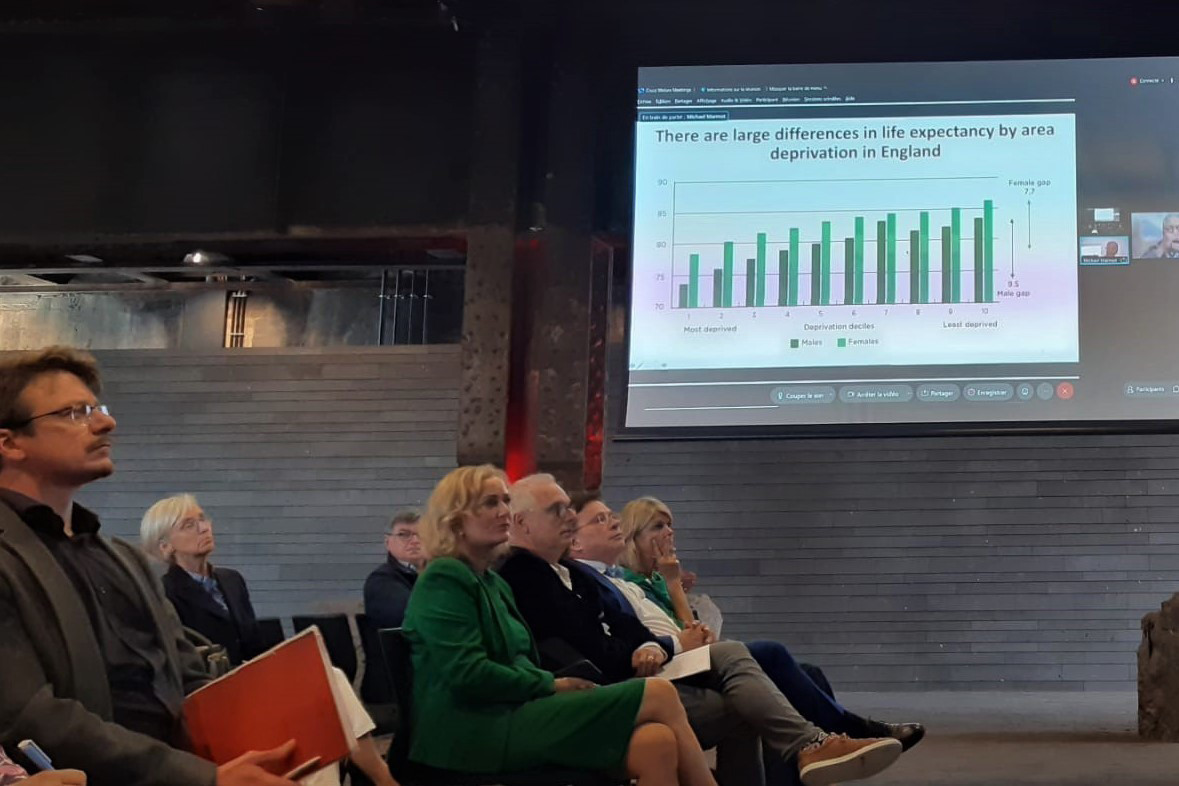“There are socio-economic inequalities in relation to illness, and not only in terms of labour market status or income. Fortunately, our health system is very efficient, but we need to move towards a more egalitarian society,” said Statec director following the presentation of the “Health for All” research seminar on Monday.
This project is the result of collaboration between the health ministry, the National Institute of Statistics and Economic Studies (Statec), the Luxembourg Institute of Socio-Economic Research (Liser) and the General Inspectorate of Social Security (IGSS). What was presented on Monday were the first interim results. The aim of the project is to provide a scientific analysis of the incidence, in Luxembourg, of infections in the resident population, hospitalisations, admissions to normal and intensive care, participation in screening tests, and deaths related to covid-19.
A difference between lockdown and post-lockdown
“We know that there is a strong inequality in health, even in societies that have a welfare state with a universal health system like ours. So we expected that there would be differences, but we didn’t know that in advance. At the socio-economic level, we could see that there was an impact of covid-19, that people lost their jobs or became partially unemployed, so we expected some inequality to increase. But we’d never had access to direct data on the disease, and we actually found that people who are in a less privileged situation are more likely to be infected with covid-19 or hospitalised,” added Allegrezza.
Among the various graphs presented by the researchers, one in particular highlighted the difference between the lockdown and non-lockdown periods. “At the time of the lockdown, we were all very equal, which is something very striking. Everyone was on the same level. And afterwards, the differences reappeared,” said Vanessa Di Bartolomeo, deputy director of the IGSS.
Correlation is not causation
The study covers data from March 2020 to 31 July 2021. A total of 69,949 people (12% of the resident population) tested positive for covid-19 in that timeframe. In the same period, 4,022 (0.7%) were hospitalised, of which 545 were in intensive care, while 691 people died and a total of 497,999 (87%) were tested at least once.
The data presented showed that the oldest people, and therefore the most vulnerable, were the most affected by the pandemic. “It’s not only age that affects the probability of being infected, however, but also socio-economic status,” added Ioana Salagean, a researcher at Statec. “In particular, we notice that the composition of the household, income and occupation all play a role. Those whose homes are occupied by more than four people were more likely to be infected and hospitalised, but also those who receive social assistance such as Revis, who work in sectors such as construction or cleaning services, or who are temporary workers.”
The recurrent problem of housing
The first conclusions of these intermediate results show that correlation is not causation. “Socio-economic status can be both a determinant and a marker of risk. Indeed, although a low income in itself does not constitute a health risk, what it allows you to buy may be important (access to a car, ability to isolate yourself, etc.),” Salagean continued.
“And this brings us back to a recurring problem in our country, which is that of housing,” lamented Allegrezza. “Not all residents have access to decent housing that meets their needs, especially large families. There is still a lot of work to be done on the interactions between different factors. For example, we know that age is very important, but if you are of a certain age and have a certain comorbidity, what is the probability of being infected or hospitalised? If you have a large family, if you work in such a sector, we will be able to calculate a conditional probability according to the situation in which you find yourself. And in the second part of the seminar we will have a new and very important variable which is the vaccine. Because it is expected that being vaccinated will still strongly reduce the probability of being hospitalised.”
This article in Paperjam. It has been translated and edited for Delano.
